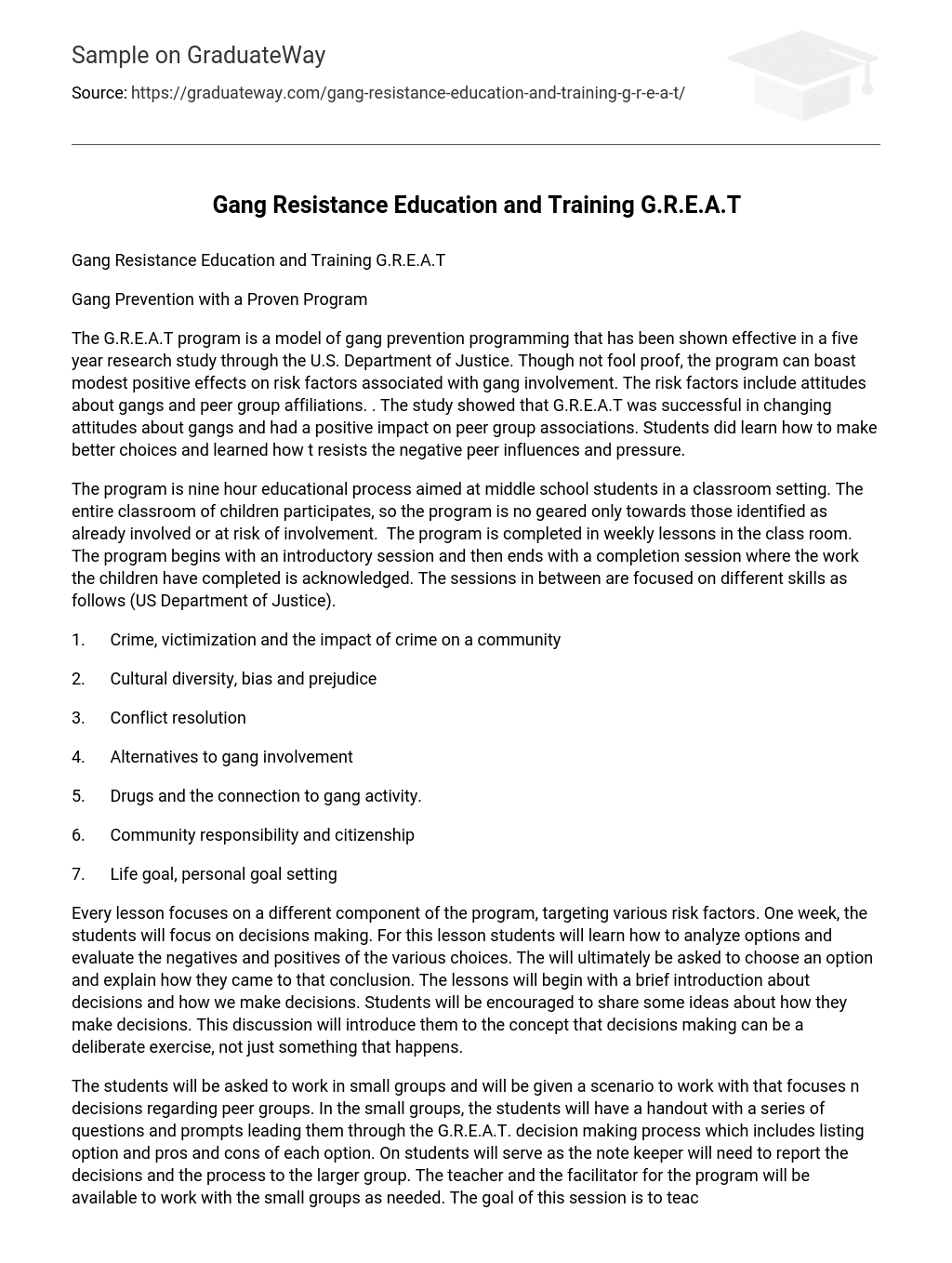Gang Prevention with a Proven Program
The G.R.E.A.T program is a model of gang prevention programming that has been shown effective in a five year research study through the U.S. Department of Justice. Though not fool proof, the program can boast modest positive effects on risk factors associated with gang involvement. The risk factors include attitudes about gangs and peer group affiliations. . The study showed that G.R.E.A.T was successful in changing attitudes about gangs and had a positive impact on peer group associations. Students did learn how to make better choices and learned how t resists the negative peer influences and pressure.
The program is nine hour educational process aimed at middle school students in a classroom setting. The entire classroom of children participates, so the program is no geared only towards those identified as already involved or at risk of involvement. The program is completed in weekly lessons in the class room. The program begins with an introductory session and then ends with a completion session where the work the children have completed is acknowledged. The sessions in between are focused on different skills as follows (US Department of Justice).
1. Crime, victimization and the impact of crime on a community
2. Cultural diversity, bias and prejudice
3. Conflict resolution
4. Alternatives to gang involvement
5. Drugs and the connection to gang activity.
6. Community responsibility and citizenship
7. Life goal, personal goal setting
Every lesson focuses on a different component of the program, targeting various risk factors. One week, the students will focus on decisions making. For this lesson students will learn how to analyze options and evaluate the negatives and positives of the various choices. The will ultimately be asked to choose an option and explain how they came to that conclusion. The lessons will begin with a brief introduction about decisions and how we make decisions. Students will be encouraged to share some ideas about how they make decisions. This discussion will introduce them to the concept that decisions making can be a deliberate exercise, not just something that happens.
The students will be asked to work in small groups and will be given a scenario to work with that focuses n decisions regarding peer groups. In the small groups, the students will have a handout with a series of questions and prompts leading them through the G.R.E.A.T. decision making process which includes listing option and pros and cons of each option. On students will serve as the note keeper will need to report the decisions and the process to the larger group. The teacher and the facilitator for the program will be available to work with the small groups as needed. The goal of this session is to teach students the process.
The lessons end with a review and discussion of each group’s process and result. Students are encouraged to actively participate in the discussion and to compare the process and results used by each group. Students are then given another scenario to discuss in the large groups to ensure that everyone understand the decision making process. Students leave the lesson having learned and practiced the skill. They will also take the hand-out material with them to refer back to as needed. Students are encouraged to talk about what they have learned at home as another means of practicing the decision making process. The other sessions of this program are designed in a similar fashion with examples, practice, small and large group exercises, participation and hand-outs.
The students that participate in this program learn how to set positive goals and how to resist negative influences and pressures. They also learn about gangs and the negative impact gang involvement can have on their life and on their community.
Program Goals
· Reduce involvements in gangs and reduce delinquent behavior
· Teach consequences of gang involvement
· Develop a positive relationship with local police
References
The US Department of Justice, Office of Justice, Office of Justice Programs, Evaluating G.R.E.A.T. ; A School-Based Gang Prevention Program , Washington, D.C. June 2004, US Dept of Justicethttp://www.ncjrs.gov/pdffiles1/nij/198604.pdf





